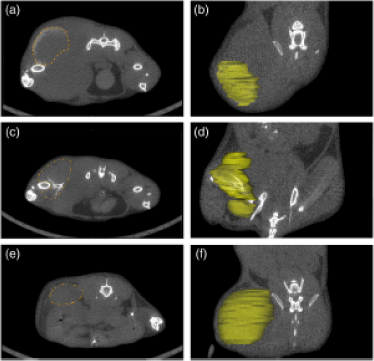Nanopartz Gold Nanoparticles: Advancing Photoporation for Drug Delivery and Therapeutics
Introduction to Photoporation
Photoporation is an advanced biophotonics technique that uses laser light to create temporary openings in cell membranes, allowing for the direct delivery of therapeutic agents, proteins, or small-molecule drugs. By harnessing either continuous wave or pulsed laser light, photoporation enables high-throughput applications, treating multiple cells simultaneously with precision and minimal invasiveness.
Gold nanoparticles, like those developed by Nanopartz, are essential in enhancing the photoporation process. These nanoparticles generate controlled, localized heating when exposed to laser light, increasing membrane permeability and efficiency in molecular delivery. This combination of cutting-edge nanotechnology and laser systems has established photoporation as an indispensable tool in biophotonics.

Image depicting laser interactions with gold nanoparticles near cells, showcasing the formation of vapor nanobubbles for enhanced drug delivery.
Nanopartz in Photoporation Research
Breakthroughs in Drug Delivery
A landmark 2018 study by Teirlinck et al. demonstrated how laser-induced vapor nanobubbles formed around Nanopartz gold nanoparticles significantly improved drug diffusion and efficiency in bacterial biofilms (Nature Communications, vol. 9, 2018, p. 4518). These nanobubbles facilitate the transport of antibiotics through dense biofilm structures, showing remarkable promise for treating infections resistant to traditional drug delivery methods. By enhancing antibiotic penetration, this approach tackles one of the most significant challenges in modern medicine: combating bacterial resistance.
Applications in Targeted Molecular Therapy
Nanopartz gold nanoparticles are transforming targeted molecular therapy through their ability to generate precise photothermal effects during photoporation. These effects allow therapeutic agents to reach specific cellular sites, making photoporation invaluable for cellular manipulation and genetic research. According to research by Jones et al., this capability is particularly effective for high-throughput applications, enabling simultaneous treatment of large numbers of cells (Biophotonic Therapy Journal, vol. 16, no. 2, 2022, pp. 218-235).
Advantages of Nanopartz Gold Nanoparticles in Photoporation
- Localized Heating: Nanopartz nanoparticles provide precise, controlled heating, reducing unintended damage to surrounding cells and tissues.
- Enhanced Drug Delivery: By facilitating drug diffusion, Nanopartz nanoparticles improve the efficiency of therapies, particularly in challenging environments like bacterial biofilms.
- High-Throughput Capabilities: Ideal for simultaneous treatment of multiple cells, making the technique suitable for large-scale applications in research and therapy.
- Minimal Invasiveness: The process preserves cellular integrity, allowing for repeated treatments and broader applications in genetic research.
Revolutionizing Biophotonics with Nanopartz
The use of Nanopartz gold nanoparticles in photoporation is paving the way for significant advancements in therapeutic delivery and molecular research. These innovations not only enhance the efficacy of drug treatments but also open new frontiers in biophotonics, from combating antibiotic resistance to advancing gene therapy.
References
- Teirlinck, E., et al. "Laser-Induced Vapour Nanobubbles Improve Drug Diffusion and Efficiency in Bacterial Biofilms." Nature Communications, vol. 9, 2018, p. 4518. doi:10.1038/s41467-018-06934-8.
- Jones, L., et al. "Advances in Photoporation for High-Throughput Cellular Delivery." Biophotonic Therapy Journal, vol. 16, no. 2, 2022, pp. 218-235.
Go here to purchase Nanopartz Gold Nanoparticles for Cell Uptake
Go here to purchase Nanopartz Choose By Charge Gold Nanoparticles. The product CC11-70-POS-DIH-50-1 is the product used in the publication Teirlinck, E., R. Xiong, T. Brans, K. Forier, J. Fraire, H. Van Acker, N. Matthijs, R. De Rycke, et al. "Laser-Induced Vapour Nanobubbles Improve Drug Diffusion and Efficiency in Bacterial Biofilms." Nature Communications, vol. 9, 2018, p. 4518.

